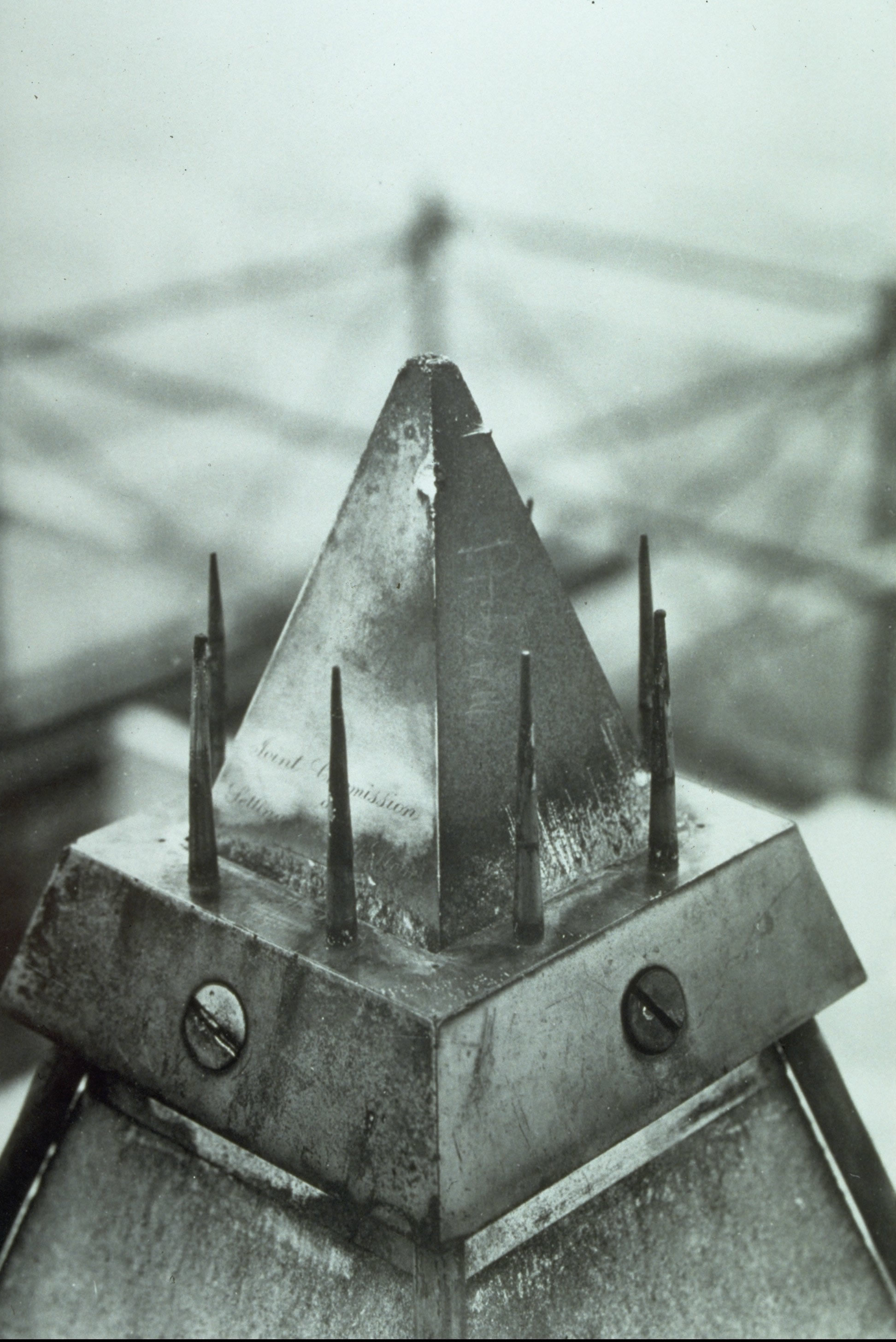
When you think of aluminum, such common items as soda cans and “tin” foil probably come to mind. Aluminum is used to make a number of products that we see in our everyday lives; in fact, it is the most abundant metallic element in the earth’s crust. However, it does not occur naturally as a metal, and aluminum remained generally unknown and unused for thousands of years.
In the early 1800s, scientists were finally able to prove its existence and produce a few droplets of pure metal, but even so, pure aluminum was more valuable than even gold or platinum. Applications of aluminum were limited to jewelry and other such luxury items: bars of aluminum were exhibited alongside the French crown jewels, and Emperor Napoleon III was said to have reserved aluminum dining sets for his most honored guests. In 1884, aluminum was used to cap the Washington Monument – at the time, the 100-ounce capstone was the single largest piece of cast aluminum ever created. It was not until the year 1886, when the first high-volume, low-cost smelting process for aluminum was discovered, that Alcoa and the age of aluminum was born.
In Oberlin, Ohio, Charles Martin Hall converted a small woodshed behind his home into a crude laboratory and began experimenting with minerals at the age of 12. In 1880, he enrolled at Oberlin College and was encouraged in his scientific research by Professor Frank Jewett, who introduced his chemistry students to aluminum. Aluminum purification processes had since been improved to bring the cost of pure aluminum down from $545 to $17 a pound, about the same as silver, but since the metal was still considered semi-precious, Jewett told his students that whoever could discover an economical way to process this substance would become rich. Fifty years later, as quoted by historian George David Smith in From Monopoly to Competition: The Transformations of Alcoa, Jewett recounted his inspirational remarks:
Speaking to my students, I said that if anyone should invent a process by which aluminum could be produced on a commercial scale, not only would he be a great benefactor to the world but would also be able to lay up for himself a great fortune. Turning to a classmate, Charles Hall said, “I’m going for that metal.” And he went for it.
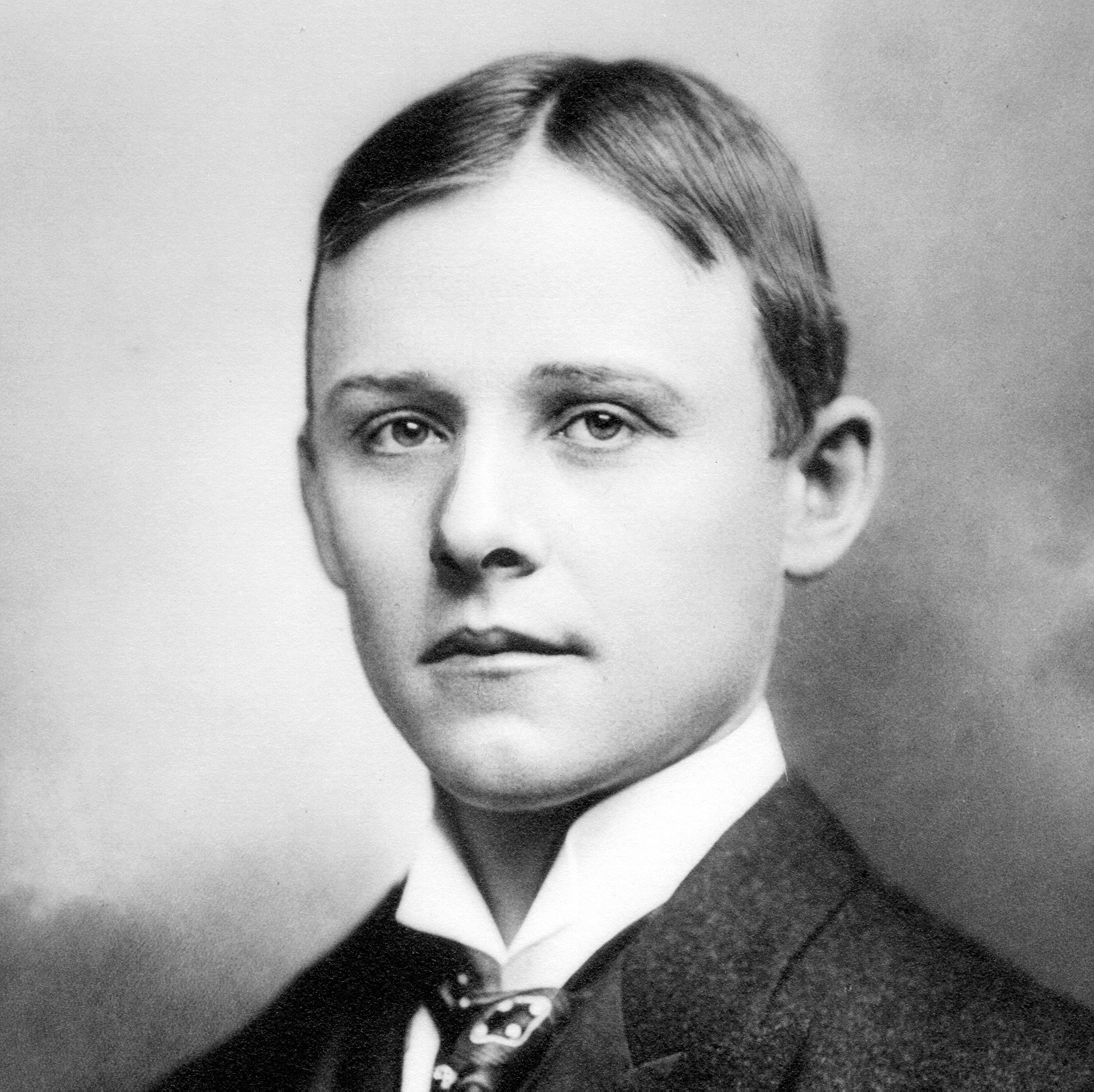
Hall continued his woodshed experiments with Jewett’s ideas even after he graduated Oberlin in 1885. On February 23, 1886, Hall made his landmark discovery: by passing an electric current through a carbon crucible that contained aluminum oxide dissolved in a cryolite bath, Hall was able to produce the first samples of pure aluminum. At nearly the same time across the Atlantic, Frenchman Paul Héroult discovered the same process. Together, their method came to be known as the Hall-Héroult process, and more than 100 years later, it remains the only method of aluminum smelting used in the industry.
A U.S. patent for the Hall-Héroult process was not officially issued until April 2, 1889, more than three years after its discovery. Nonetheless, Hall was confident that his new technique would reinvent the manufacturing industry. In the summer of 1888, he took his discovery to nearby Pittsburgh, to seek financial backing. There, a group of six industrialists led by the noted metallurgist Alfred E. Hunt agreed to stake $20,000 in support of Hall and the new aluminum process, and together, they formed the Pittsburgh Reduction Company.
The entrepreneurs’ investment would indeed pay off: on Thanksgiving Day, 1888, Hall and his first employee, Arthur Vining Davis, produced the first commercial aluminum using the Hall-Héroult process. The small plant in what is now Pittsburgh’s Strip District became the first large-scale aluminum production factory, with an article appearing in The America Artisan magazine recognizing the company as having “the largest and best equipped plant in the country.” As Hall continued to improve his process, further reducing the cost of aluminum from $4.86 a pound in 1888 to 78 cents in 1893, Davis began to introduce new aluminum products such as cooking utensils, foil, electric wire and cable, and engine parts.
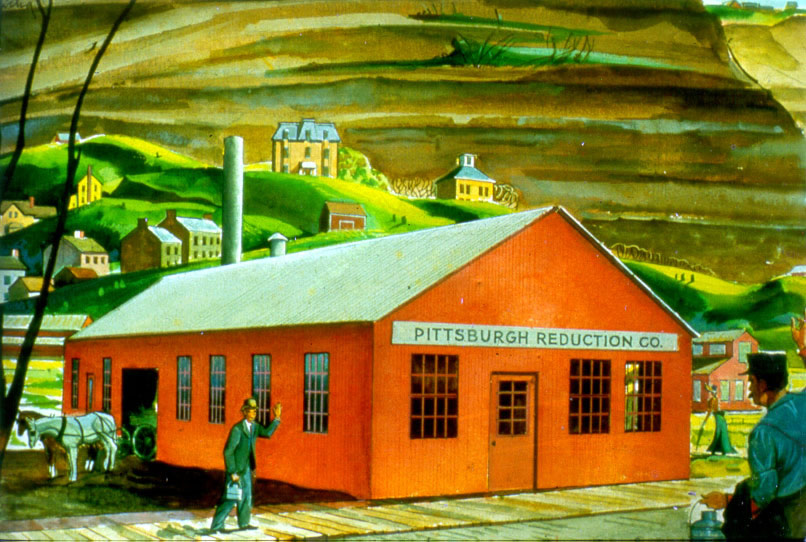
The company would continue to grow to include bauxite mines in Arkansas, a refinery in Illinois, and three additional aluminum smelters in New York and Canada. By 1903, the company had become the only legal supplier of aluminum in the United States. In 1907, the name was changed to the Aluminum Company of America and the acronym “Alcoa” was coined in 1910. By the late 1930s, a pound of aluminum cost just 20 cents and Alcoa counted more than 2000 uses for its products.
The company’s unparalleled success in its industry, however, proved to be problematic. In 1937, the United States Department of Justice brought what is now one of the most famous and studied antitrust lawsuits against Alcoa. The company had grown to become both horizontally and vertically integrated: Alcoa most certainly had monopolized the aluminum industry, and Smith states that The New Yorker magazine even referred to the company as “the aluminum trust.” Even so, Alcoa’s corporate secretary George Gibbons defended the company’s practices, asserting, “If we are a monopoly, it is not of our own choosing.” While Alcoa’s management believed the company’s hold of the industry was a testament to its own achievement, many politicians and wage laborers feared big business and lack of competition. U.S. v. Alcoa brought over 140 charges accusing Alcoa of monopolizing sixteen markets and conspiring with foreign producers to keep them out of the United States, but Alcoa would adamantly fight the Justice Department’s demands that the company be dissolved.
Two years after the suit was brought, World War II began. Now, aluminum was consumed not only by the domestic and industrial sectors, but its extremely light weight made it popular among the military as well: soldiers carried aluminum canteens, warships and weapons used aluminum parts, and new research constantly developed new aluminum products for military use. Demand for the metal doubled, and the door was thrown wide open for new entrants to the market.
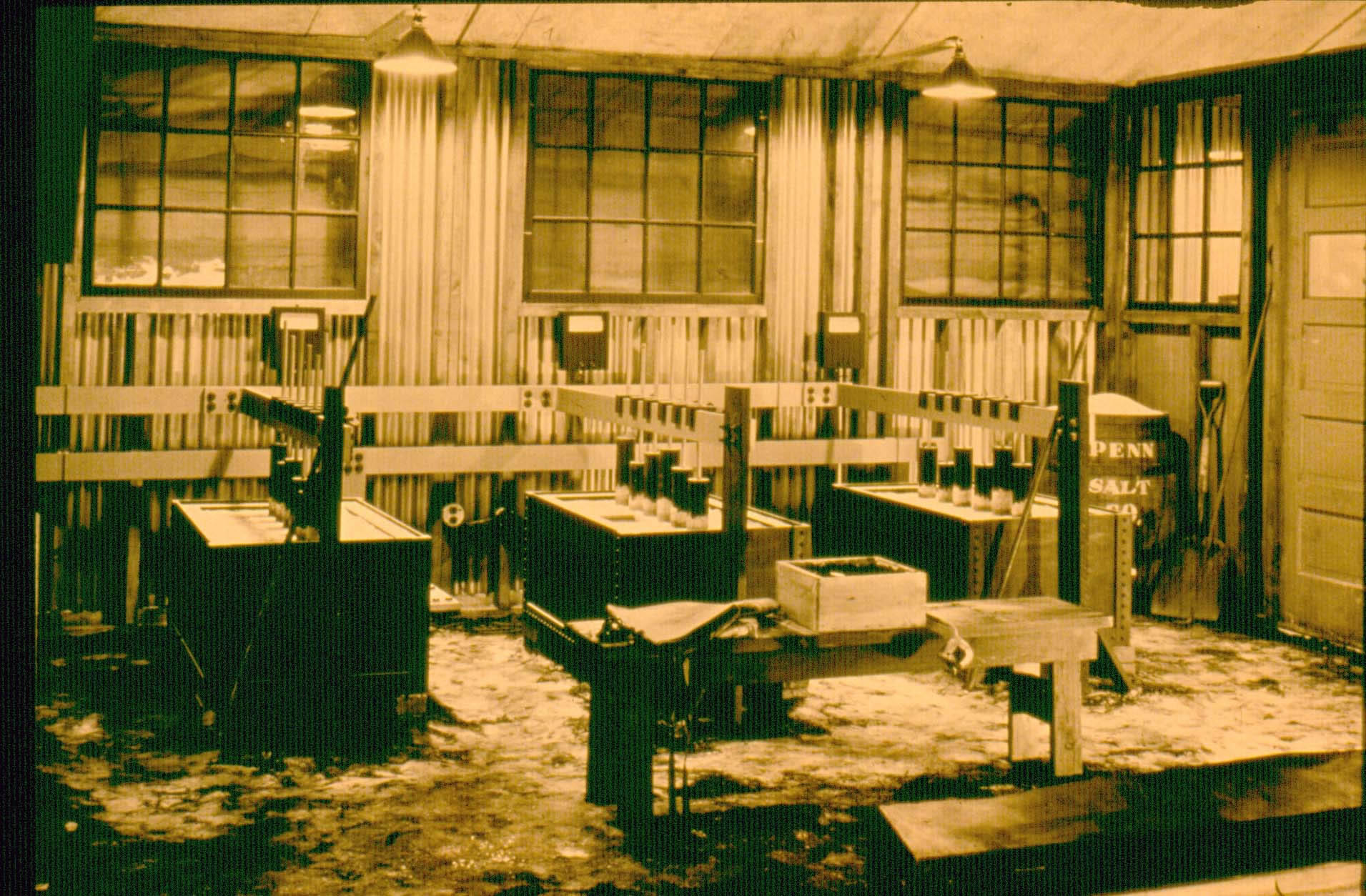
While Alcoa remained mired in the monopolization debate – though the original trial judge dismissed the case four years after it was initially filed, the government appealed, and in 1945, the case appeared before the U.S. Court of Appeals for the Second Circuit – federal government financing of the aluminum industry allowed for new companies to succeed. Once the war ended, however, Alcoa was able to use this fact to its advantage: Alcoa argued that as a result of the sale of government-financed aluminum plants, two new companies, Reynolds and Kaiser, had effectively entered the aluminum market. Alcoa believed that the problem of monopolization had solved itself, thus no judicial action would be required. The case was then moved again, this time to district court, and in a historic verdict, a judge in 1950 ruled against divestiture. Though at last, Alcoa could breathe a sigh of relief, it had irrevocably lost its once near-complete hold on the American aluminum market.
Alcoa had little to be concerned about, however, as the end of U.S. v. Alcoa marked the beginning of a new era for the aluminum market. Spurred on by yet another war, this time in Korea, consumption in the 1950s again doubled. Expansion of the industry as a whole would more than compensate for the company’s loss in market share, and competition encouraged the development of new applications, product development, marketing, and promotion.
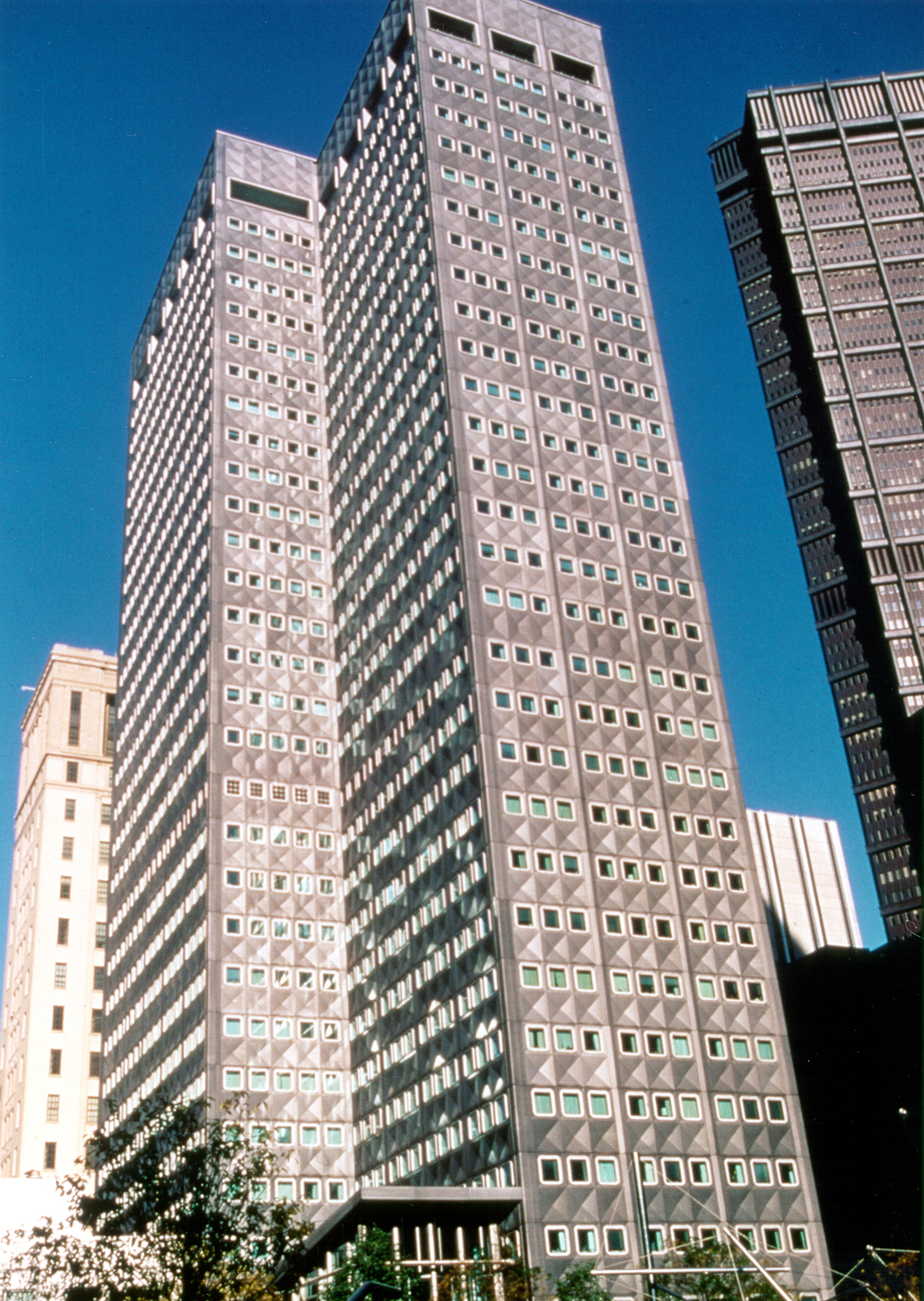
During the next 50 years, Alcoa would reinvigorate its research and development efforts. The company improved its products and technologies and broadened its expertise into the fabrication of other light metals. It expanded into new businesses such as monumental architecture, office buildings, and apartment housing. Though its post-World War II share had decreased to one-third of the American market, Alcoa would remain the largest and most profitable aluminum company in the world until recent years.
Today, Alcoa has more than 200 locations in 31 countries, spanning all continents except for Antarctica. Alcoa, Inc. was officially adopted as the corporate name in 1999 to better reflect its global scope and increasingly diverse business. Globalization did indeed help Alcoa, but as the aluminum market continued to expand, the company faced competition from both domestic and international producers. In March 2007, the Russian aluminum giant RUSAL merged with SUAL and the Swiss company Glencore to become United Company Rusal, overtaking Alcoa as the world’s largest aluminum company.
Alcoa responded just two months later by making a $27 billion hostile takeover bid of Alcan, a former Canadian subsidiary of Alcoa that spun off in 1928. At the time, Alcan sat as the third largest aluminum company, and Alcoa aimed to unite the two companies to reclaim the top spot in the aluminum market. The bid failed, however, and Alcan instead accepted a friendly takeover by Rio Tinto Canadian Holding Inc. The renamed Rio Tinto Alcan Inc. company now stands as the world’s largest producer of aluminum.
Since being surpassed by UC Rusal and Rio Tinto Alcan, Alcoa has had to expand into other industries besides aluminum processing and fabrication. Alcoa businesses now offer architectural products, building and construction systems, fastening systems, and packaging, just to name a few. When considering the combined production and management of primary aluminum, fabricated aluminum, and alumina, Alcoa is still the world leader.
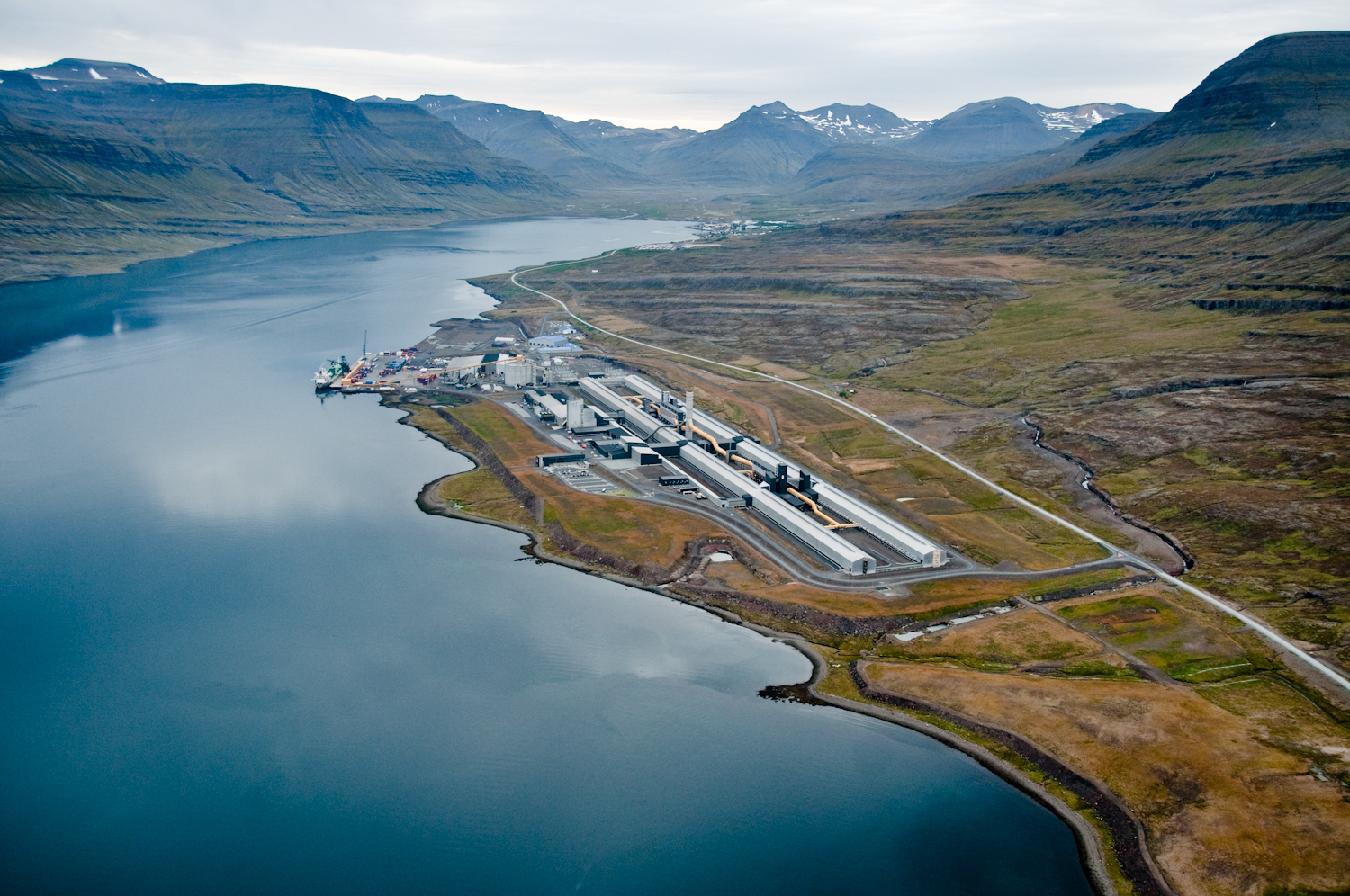
Alcoa remains an industry leader in other respects, as well. In recent years, the company has made a strong commitment to sustainability, citing that more than 70% of the aluminum it ever produced is still in use, equivalent to 586 of the 806 million metric tons Alcoa has manufactured since 1886. Alcoa joined the U.S. Climate Action Partnership in launching climate protection initiatives and encouraging climate change legislation and has also invested millions in new technologies, such as carbon capture to lock up greenhouse gases that would otherwise be emitted and alternative fuels to power aluminum smelting.
For its efforts, the company was named to the Global 100 ranking of the top role models in sustainable business practices during the World Economic Forum in Davos, Switzerland in January 2009. Then in September, it was selected for the Dow Jones Sustainability Indexes, a leading worldwide reference point for sustainability investing, for the eighth consecutive year. As stated by Alcoa CEO and President Klaus Kleinfeld, “To be included on this key index for eight years in a row clearly shows that Alcoa’s commitment to sustainability remains strong. We produce the ideal sustainable material – aluminum is lightweight and infinitely recyclable, and it will continue to play a key role in the sustainable life of our planet.”
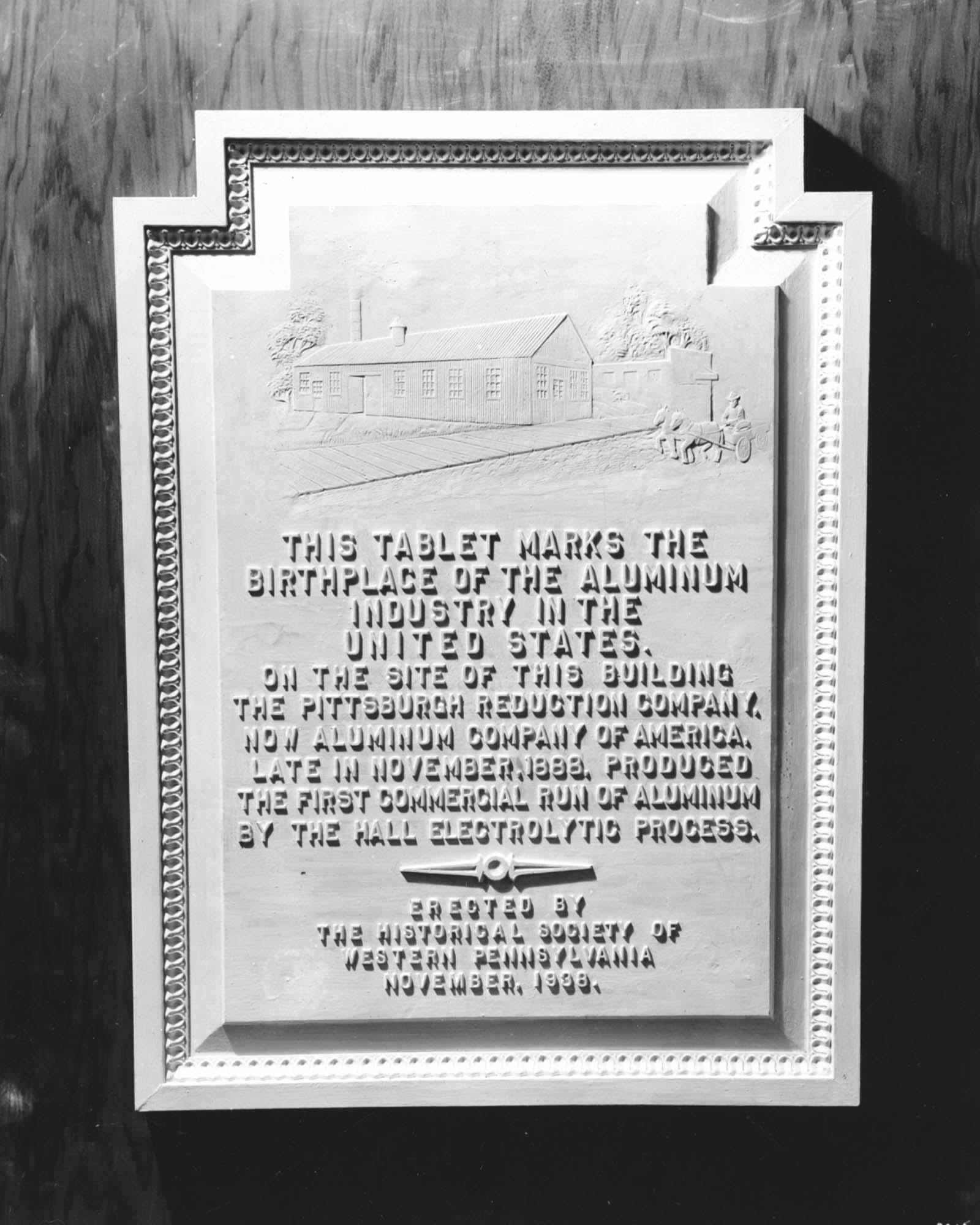
Alcoa’s latest honor came in March 2010, when Fortune magazine rated it the most admired metals company in the world, a list on which the company has been included for 27 consecutive years. In addition to being most admired in the industry overall, Alcoa was ranked first in a number of other key attributes, including innovation, social responsibility, financial soundness, and quality. In Alcoa’s news release on the rankings, Kleinfeld stated, “I am proud of the Alcoa employees worldwide who have helped us achieve this distinction over the years. It is a testament to their dedication to live the Alcoa Values and a tribute to the spirit of Alcoa across the world.”
Before Charles Martin Hall’s discovery of the Hall-Héroult process, total U.S. production in 1884 was just 125 pounds; in 2008, U.S. production was over 2.6 million metric tons with world production over 25.6 million metric tons. The small plant that began in Pittsburgh’s Strip District now has 63,000 employees around the world with $26.9 billion in revenue in 2008. For over 120 years, Alcoa has been a leader in the aluminum business, and the company that created an entire industry will surely continue to help galvanize its future.
Sources:
- Alcoa. “Alcoa Again Named Fortune Magazine’s Most Admired Metals Company.” BusinessWire. 8 Mar. 2010. 30 Mar. 2010 <http://www.businesswire.com/news/home/20100308006024/en/Alcoa-Named-Fort....
- Alcoa. “Alcoa Again Named One of the World’s Most Sustainable Corporations at Davos.” BusinessWire. 29 Jan. 2009. 4 Mar. 2010. <http://www.businesswire.com/news/alcoa/20090129005574/en/Alcoa-Named-Wor....
- Alcoa. “Alcoa Named to Dow Jones Sustainability Index for Seventh Consecutive Year.” BusinessWire. 9 Sept. 2008. 4 Mar. 2010. <http://www.businesswire.com/news/alcoa/20080909005914/en/Alcoa-Named-Dow....
- Alcoa. Alcoa Inc. Web. 25 Feb. 2010. <www.alcoa.com>.
- The Aluminum Association. The Aluminum Association. Web. 30 Mar. 2010. <http://www.aluminum.org/>.
- International Aluminium Institute. International Aluminium Institute. Web. 30 Mar. 2010. <http://www.world-aluminium.org/>.
- “Manufacture of Aluminum.” The American Artisan 25 Oct. 1890: 19. Web. 8 Apr. 2010.
- Napsha, Joe. “Aluminum’s Long History in Steel City.” Pittsburgh Tribune-Review. Tribune-Review, 5 Mar. 2006. 30 Mar. 2010 <http://www.pittsburghlive.com/x/pittsburghtrib/print_430000.html>.
- Rio Tinto Alcan. Rio Tinto. Web. 30 Mar. 2010. <http://www.riotintoalcan.com/>.
- Smith, George David. From Monopoly to Competition: The Transformations of Alcoa, 1888-1986. Cambridge [England]: Cambridge UP, 1988.
- United Company Rusal. RUSAL. 30 Mar. 2010. <www.rusal.com>.
- “World’s Most Admired Companies.” Fortune 22 Mar. 2010. Fortune. CNN Money. 30 Mar. 2010. <http://money.cnn.com/magazines/fortune/mostadmired/2010/snapshots/15.html>.
